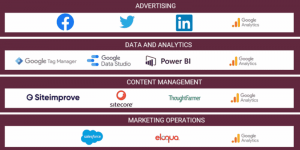With vaccination rollouts hitting speed bumps, we know the COVID-19 pandemic is likely far from over — at least in the United States.
Although finance will play a pivotal role in 2021, navigating this current period of uncertainty will still require careful financial footwork. Companies will need to understand the strengths and weaknesses of their financial position at all times to choose their next move wisely, which raises an important question: Is your finance stack up to the task?
If not, 2021 could be a rocky year. Companies lacking solid financial data might act timidly through the recovery period and increase the length of it as a result. Alternately, those operating on incomplete or inaccurate information could act boldly yet recklessly, making an unfortunate situation worse.
A top-notch finance stack — one that can ensure things such as automated payment processing — can keep finance from becoming an obstacle in 2021. More than that, it can supply the data and tools necessary to recover stronger, thanks to skillful financial maneuvering. For companies, the finance stack can either be an asset or an obstacle in 2021.
So how will the financial journey play out for your organization?
The Building Blocks of a Better Finance Stack
There’s no such thing as a one-size-fits-all finance stack; customization is key. However, there are features that all stacks will need to share by the end of this year. Try implementing these tenets to ensure a smooth transition toward growth and success:
1. A full-fledged automation strategy: Automation can (and will) improve all aspects of the finance stack, from payment systems to strategic planning. However, this won’t happen automatically, and companies serious about embracing automation need a holistic long-term strategy.
Look for automated tools to introduce in 2021, particularly with regards to visibility and control around financial data. At the same time, consider things through both a three- and five-year lens to map out the full alignment of automation within your business strategy, financial and otherwise. Long-term planning helps automation integrate with existing tools and processes as widely and seamlessly as possible.
And with increasing automation over a period of time, finance evolves from being reactive to being predictive and proactive. Given the disruption present all throughout last year and the fresh start promised in 2021, this is the ideal time to plan an automation strategy and set the wheels in motion.
2. An ecosystem built through integration: Whatever form your finance stack takes in 2021 and beyond, make your existing technologies the centerpiece. Although it might seem tempting to build a best-in-class tech stack from the ground up, that involves a high cost and a heavy disruption at a time when most companies can’t afford either.
Are the existing tools adequate? If so, work on enhancing rather than replacing them. Look for partners that can integrate with your existing tools (such as enterprise resource planning) while adding features and strengths you’re currently missing (such as payment software offering automated payment processing).
3. A modern infrastructure: The rise of remote work made very clear that nothing important — whether that’s data or tools — should be bound to the physical office. That’s especially true of finance. Financial resources should be accessible from anywhere (and at any time) through the cloud. Beyond that, finance needs the aid of emerging technologies such as artificial intelligence and machine learning so employees can learn more from financial data while spending less time managing the system.
As companies build out their finance stack in 2021 and lean on it like never before, it’s vital to pick solutions that are robust in terms of accessibility and functionality. A modern infrastructure makes financial data accessible to everyone and automatically updates the numbers in real time. The emphasis is on data-driven decision-making rather than data management.
At the start of 2021, many financial leaders are wondering what plays to make next. Now, taking a critical look at the finance stack (and the payment solutions and accounting tools it contains) makes sense. A company’s financial performance carries extra weight over the next few quarters, making quality financial tools all the more important. Furthermore, enhancing the finance stack gives decision makers the intelligent insights and predictive capabilities they can use to expedite recovery and stay competitive.
What’s stopping you from reevaluating your financial tech stack today? If you need help planning your next steps when it comes to building a high-quality financial tech stack, watch Tipalti’s free webinar.
Business & Finance Articles on Business 2 Community(22)







